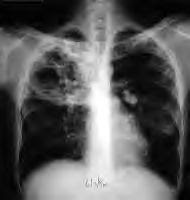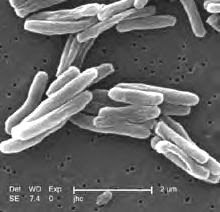ABKHAZIA INSTTUTE FOR SOCIAL & ECONOMIC RESEARCH
Worldwide Emergence of Extensively Drug-resistant Tuberculosis
Written by Ramaz Mitaishvili
Saturday, 01 September 2007
Abstract Mycobacterium tuberculosis strains that are resistant to an increasing number of second-line drugs used to treat multidrug-resistant tuberculosis (MDR TB) are becoming a threat to public health worldwide. We surveyed the Network of Supranational Reference Laboratories for M. tuberculosis isolates that were resistant to second-line anti-TB drugs during 2000––2004. We defined extensively drug-resistant TB (XDR TB) as MDR TB with further resistance to >3 of the 6 classes of second-line drugs. Of 23 eligible laboratories, 14 (61%) contributed data on 17,690 isolates, which reflected drug susceptibility results from 48 countries. Of 3,520 (19.9%) MDR TB isolates, 347 (9.9%) met criteria for XDR TB. Further investigation of population-based trends and expanded efforts to prevent drug resistance and effectively treat patients with MDR TB are crucial for protection of public health and control of TB.
Multidrug-resistant tuberculosis (MDR TB) has been documented in nearly 90 countries and regions worldwide; 424,203 cases of MDR TB were estimated to have occurred in 2004, which is 4.3% of all new and previously treated TB cases. Treatment for MDR TB patients requires use of second-line drugs for >24 months. These drugs are more costly, toxic, and less effective than first-line drugs used for routine treatment of TB. As with other diseases, resistance to TB drugs results primarily from nonadherence by patients, incorrect drug prescribing by providers, poor quality drugs, or erratic supply of drugs. To facilitate treatment of MDR TB in resource-limited countries, where most TB cases occur, the World Health Organization (WHO) and its partners developed the Green Light Committee, which helps ensure proper use of second-line drugs, to prevent further drug resistance. Nonetheless, the Green Light Committee encountered numerous anecdotal reports of MDR TB cases with resistance to most second-line drugs. Once a strain has developed resistance to second-line drugs, these new TB strains are even more difficult to treat with existing drugs. Untreated or inadequately treated patients are at increased risk of spreading their disease in the community, which could lead to outbreaks in vulnerable populations and widespread emergence of a lethal, costly epidemic of drug-resistant TB, reminiscent of the MDR TB outbreaks in the early 1990s. Therefore, to determine whether these anecdotal reports were isolated events, early evidence of an emerging epidemic, or the occurrence of virtually untreatable forms of drug-resistant TB that had not been described previously in different parts of the world, we characterized and quantified the frequency of second-line––drug resistance in several geographic regions.
WHAT'S NEW IN TUBERCULOSIS
Wednesday, 5 September 2007
Subscribe to:
Post Comments (Atom)





No comments:
Post a Comment